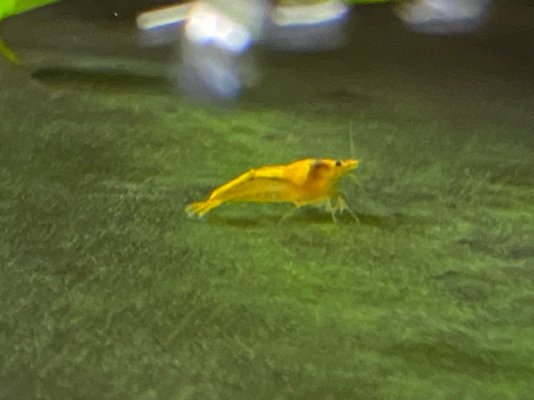Does anyone know what these brown patches are that are either behind the eye of my shrimp or sometimes on the top near where the saddle is?
Ive had these shrimp for about 6 weeks and it's initial colony of 7 has grown to at least 20 and I have seen no deaths. So I am not sure if this just normal like a bad molt, or it's the food they are eating, or something else?
I used to think maybe it was lack of oxygen but I recently got a air stone.
It could be maybe because my TDS got out of hand and got as high as 510ppm, maybe due to using a Magic Shell and Mr. Turtle, along with de-clorinating tap water and the initial cycle.
I have sense got it down to just below 300, by diluting it with RO water and sometimes using GH/KH+ Remineralizer.
Water Parameters Currently
--------------------------------
Ammonia - 0
Nitrate - 0
Nitrate - ~10
PH - 7.4
KH - 3 (usually between 3 and 4)
GH - 14 (was up to 25 when TDS was near 500)
Thanks to anyone who has seen this before, this is my first time keeping shrimp.
Ive had these shrimp for about 6 weeks and it's initial colony of 7 has grown to at least 20 and I have seen no deaths. So I am not sure if this just normal like a bad molt, or it's the food they are eating, or something else?
I used to think maybe it was lack of oxygen but I recently got a air stone.
It could be maybe because my TDS got out of hand and got as high as 510ppm, maybe due to using a Magic Shell and Mr. Turtle, along with de-clorinating tap water and the initial cycle.
I have sense got it down to just below 300, by diluting it with RO water and sometimes using GH/KH+ Remineralizer.
Water Parameters Currently
--------------------------------
Ammonia - 0
Nitrate - 0
Nitrate - ~10
PH - 7.4
KH - 3 (usually between 3 and 4)
GH - 14 (was up to 25 when TDS was near 500)
Thanks to anyone who has seen this before, this is my first time keeping shrimp.

